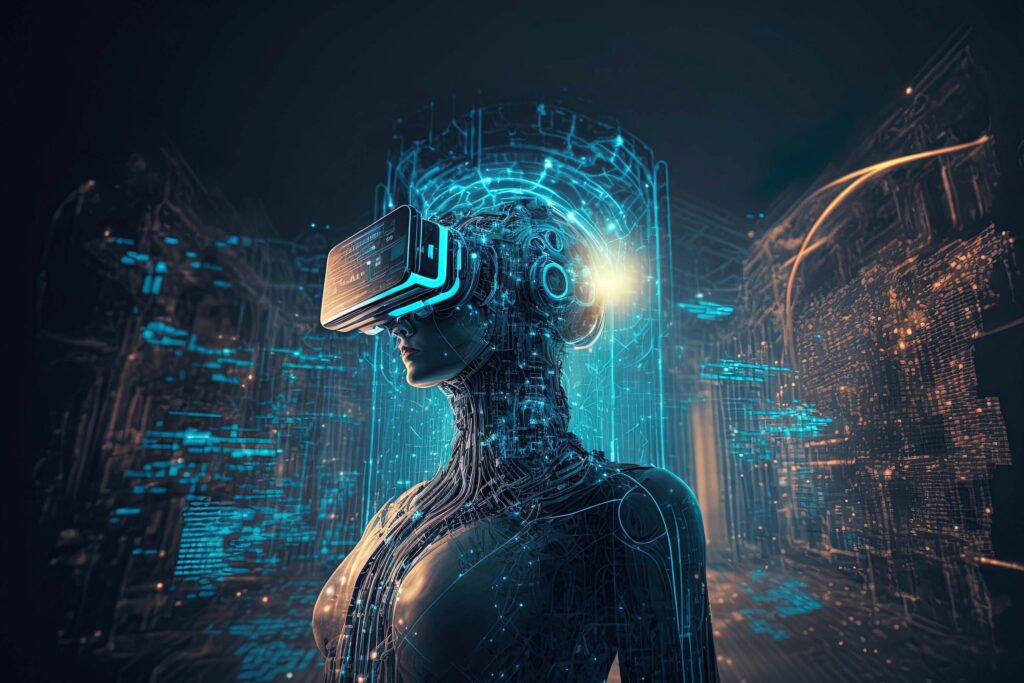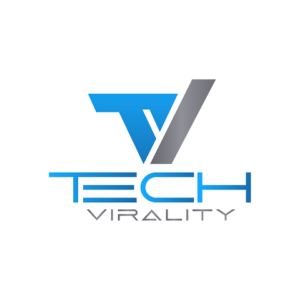
Many people think that virtual reality is just a fad or an expensive toy for gamers with too much disposable income. However, this couldn’t be further from the truth. VR is already changing the world around us for the better, and here are some reasons why virtual reality isn’t a gimmick.
VR isn’t just a gimmick. It enables safe training for pilots and surgeons, pushes the boundaries of technology, and improves spatial visualization. VR enables architects and designers to work on and test prototypes. VR allows therapists to help their patients overcome PTSD, anxiety, and phobias.
Keep reading as I explain how VR technology has enabled humanity to solve unique problems that otherwise wouldn’t be solvable.
1. Pushing Technological Advances in Hardware and Software

When VR was initially becoming popular in around 2016, the tech encountered many naysayers. Even Forbes claimed that VR was just “an over-priced gimmick,” but that couldn’t be further from the truth.
Games like Half-Life: Alyx wouldn’t have 70,000 reviews, with 98% being positive, if VR is just a gimmick. This proves that the technology is already good enough to provide an enjoyable source of entertainment.
We’ve seen some incredible technological advances just in the past few years. VR headsets have become more affordable, better, and even have integrated SoCs to run low-power stuff without a high-end PC.
For instance, take a look at the Meta Quest 2 (Amazon.com). It’s an affordable headset with an integrated mobile processor paired with 6 GB of RAM. So, it can run some popular VR games effortlessly. And it does that on two Full HD 90 Hz displays.
VR demands a high refresh rate paired with a sharp screen and a wide FOV (field of vision). This alone has pushed the display industry to make better and more affordable displays. Thanks to the demand, even budget smartphones now have IPS high-refresh-rate displays.
The tech industry has also learned how to create more precise motion-tracking controllers with realistic haptic feedback. We’ve come a long way since the days of Xbox Kinect and Wii remotes.
VR has also helped us better research motion sickness induced by VR and how to combat it.
One of the more amusing examples of mitigating VR sickness has been to add a virtual nose. Our brains are used to seeing and ignoring our noses. So, we can handle motion sickness much better by having a fixed point of reference.
VR has also pushed some unique solutions to optimization. For instance, games on a monitor traditionally have to render your entire environment.
But since this requires tremendous computing resources, developers have developed some complex rendering algorithms. For instance, your computer might not render stuff hidden behind another object, such as a wall, to improve performance. This is done by processing a “visibility map.”
2. Safe Training in High-Risk Environments

Ever wondered how surgeons train before they’re allowed to slice someone up like an 8th grade dissecting a frog?
They train on things like silicon pads and animal parts. And when they’re good enough, they’re allowed to do some smaller routine procedures under the supervision of senior surgeons.
VR helps bridge that gap by providing a completely safe and realistic environment.
VR can simulate everything from closing puncture wounds to brain surgery in 3D. As the Stanford Medical Center Development explains, this is done using a combination of data from things like CT and MRI scans.
A surgeon that has had a chance to train for an operation 20 times before they do it for real will have a significantly higher chance of succeeding. This is especially true for high-risk surgeries.
But this is just one example. The possibilities of VR training are endless.
In addition to medicine, VR is used in the following fields:
- Aviation. Pilots often spend hundreds of hours training in VR before entering a cockpit.
- Oil and gas industry. VR allows engineers to train in a simulated environment to condition themselves for dangerous situations, especially on offshore rigs.
- Racing. Before driving a 1,000 hp F1 car, drivers can build muscle memory in realistic driving setups to better understand how such cars handle.
- Firefighting. Training in VR can prepare firefighters to rescue people in an endless number of realistic scenarios.
- Nuclear industry. VR is used to train nuclear plant operators to enable them to handle unforeseen situations.
The possibilities of VR are endless in this regard. As the technology advances, it’ll only become more apparent.
3. Better Spatial Visualization and Prototype Designing

Traditional design software architects use has some serious drawbacks, especially concerning visualization. You’re either limited to 2D or have limited 3D capabilities to render environments.
Enter VR.
With a VR headset and software like Autodesk LIVE and Enscape, you can visualize what your project looks like in real time. This allows you to adjust dimensions more quickly, ensure there’s enough headroom, and check if you have maximized the use of space more thoroughly.
Visualizing your project on a screen is convenient, but it can be so much better.
Walking around a space you created in VR is an elevated experience that allows you to accurately envision its appearance.
You can check out what this looks like in the real world by watching this video:
VR also helps designers create realistic prototypes in a much more affordable way.
For instance, cars can cost hundreds of thousands of dollars to prototype. By doing that in VR, at least before creating a full-scale model, engineers can make more minor adjustments first.
4. Improves the Quality of Life for People With Disabilities

People with physical impairments have it rough in the real world. They can’t experience something as mundane as safely walking down a busy street.
But that has changed with the help of VR.
For instance, people with severe visual impairment can still use VR in some capacity to have multi-sensory experiences. They can even learn how to navigate the real world better by adjusting their senses in virtual reality.
Once we manage to create entirely realistic cities, people with disabilities will be able to plan their trips accordingly.
VR is also a saving grace for people who have had an accident and have to re-learn how to walk. VR can provide a safe yet realistic environment that can prepare them to face the real world again.
Moreover, scientists have developed a VR driving simulator to help handicapped people learn and improve their driving skills.
All in all, VR is an invaluable asset to physically impaired people. It can help them prepare for the real world and provide a great source of entertainment in the form of video games.
5. Boosts Social Interaction Over a Distance
Using VR for social interaction is one of VR’s greatest and most used benefits.
By transcending physical barriers, VR creates immersive environments for people to interact with loved ones. It’s not the same as hanging out in real life, but it’s better than doing that over a 2D screen.
An example would be long-distance couples using VR to have fun and bond.
VR can also be used for business meetings. However, one technological drawback is that avatars aren’t particularly realistic. But it’s only a matter of time before we can have graphics in VR similar to those in modern AAA games like Death Strandingand Cyberpunk 2077.
6. Enables Immersive Mental Health Therapy

Virtual reality therapy, or VRT as it’s now known, has recently gained considerable popularity.
VRT has created a new approach to mental health therapy. Namely, it provides patients with a safe and controlled yet realistic environment that can simulate their fears.
For example, it’s often used for exposure therapy with the help of a therapist. A patient could overcome their fear of dogs by dealing with a virtual Rottweiler who’s ready to bite them. Or they could be put in a glass elevator going at insane speeds to help them manage their fear of heights.
Another example of VRT is using avatars in place of talking face-to-face to make patients more comfortable when talking about their feelings.
As Forbes explains, VRT has seen a lot of success in managing and treating:
- Anxiety
- PTSD
- Various common phobias (agoraphobia, arachnophobia, etc.)
- Chronic pain
- Grief
- Substance abuse
Final Thoughts
VR is not some new tech craze that you can use to play Skyrim.
It’s a real technological advancement with some incredible implications. It’s already being used to improve the lives of millions.
Sources
- Reddit: it is NOT a gimmick I repeat it is NOT
- Medium: Is VR a Gimmick or the Future of Marketing? An Honest Discussion around VR and it’s Marketing Use
- UVIAUS: Why VR Will Fail
- Forbes: Virtual Reality Is Just An Over-Priced Gimmick, Nothing More
- Steam: Half-Life: Alyx
- Wikipedia: Virtual reality sickness
- Stanford Medicine: Virtual reality system helps surgeons, reassures patients
- Will Peach MD: How Do Med Students Practice Surgery? (Try-At-Home Examples!)
- Mazer Space: How Virtual Reality Transforms The Lives Of Disabled People
- Springer: Rendering massive indoor point clouds in virtual reality
- NIH: The development and clinical trial of a Driving Simulator for the handicapped
- NIH: How Virtual Reality Technology Has Changed Our Lives: An Overview of the Current and Potential Applications and Limitations
- Forbes: Virtual Reality Therapy: Everything You Need To Know
Recent Posts
Virtual reality has come a long way, especially in the past decade. And a hypothetical metaverse where we could work, play, and essentially live has long been in the public consciousness. With all...
In the ever-evolving world of technology, Virtual Reality (VR) has emerged as a groundbreaking force, captivating users with its immersive experiences and transforming numerous industries. As the...
